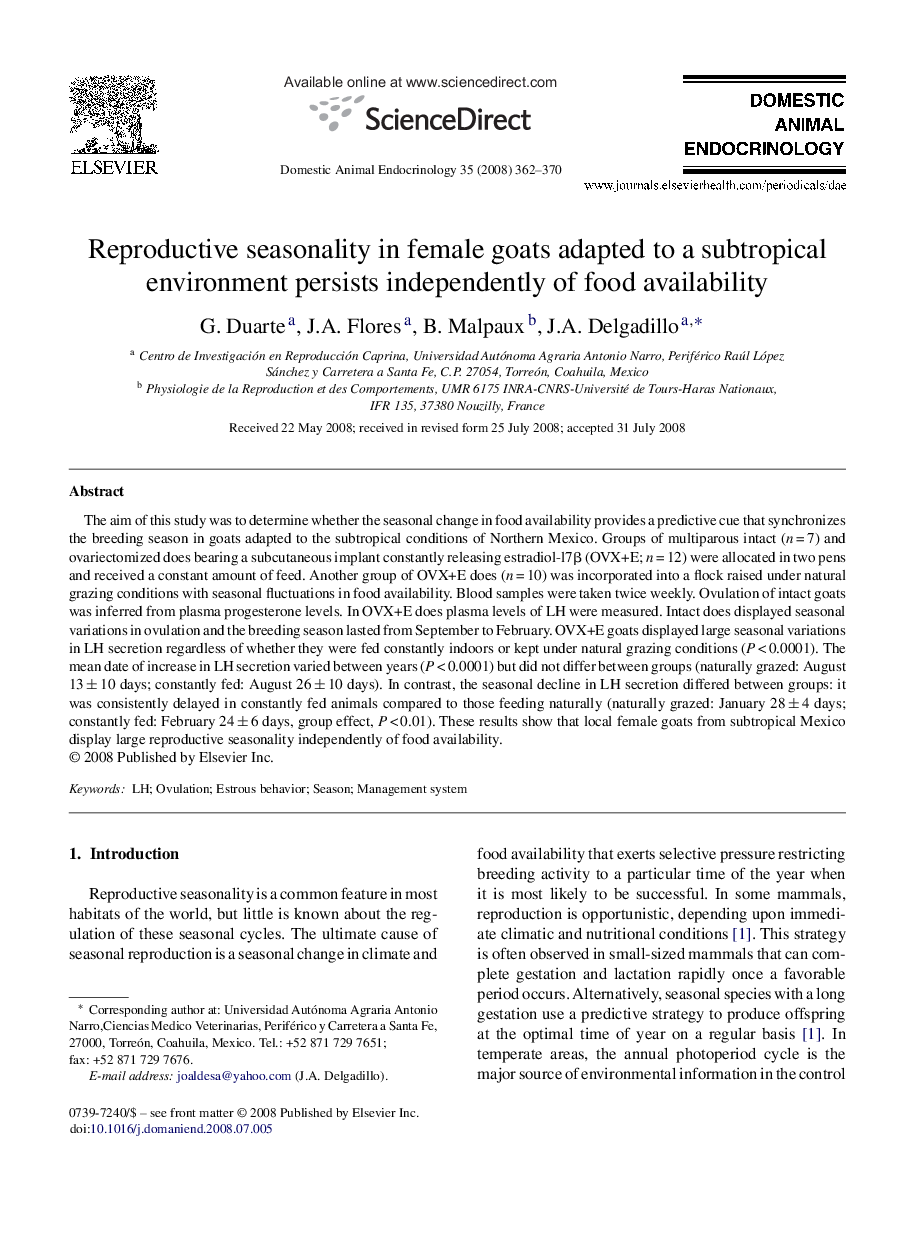| Article ID | Journal | Published Year | Pages | File Type |
|---|---|---|---|---|
| 2394105 | Domestic Animal Endocrinology | 2008 | 9 Pages |
The aim of this study was to determine whether the seasonal change in food availability provides a predictive cue that synchronizes the breeding season in goats adapted to the subtropical conditions of Northern Mexico. Groups of multiparous intact (n = 7) and ovariectomized does bearing a subcutaneous implant constantly releasing estradiol-l7β (OVX+E; n = 12) were allocated in two pens and received a constant amount of feed. Another group of OVX+E does (n = 10) was incorporated into a flock raised under natural grazing conditions with seasonal fluctuations in food availability. Blood samples were taken twice weekly. Ovulation of intact goats was inferred from plasma progesterone levels. In OVX+E does plasma levels of LH were measured. Intact does displayed seasonal variations in ovulation and the breeding season lasted from September to February. OVX+E goats displayed large seasonal variations in LH secretion regardless of whether they were fed constantly indoors or kept under natural grazing conditions (P < 0.0001). The mean date of increase in LH secretion varied between years (P < 0.0001) but did not differ between groups (naturally grazed: August 13 ± 10 days; constantly fed: August 26 ± 10 days). In contrast, the seasonal decline in LH secretion differed between groups: it was consistently delayed in constantly fed animals compared to those feeding naturally (naturally grazed: January 28 ± 4 days; constantly fed: February 24 ± 6 days, group effect, P < 0.01). These results show that local female goats from subtropical Mexico display large reproductive seasonality independently of food availability.
